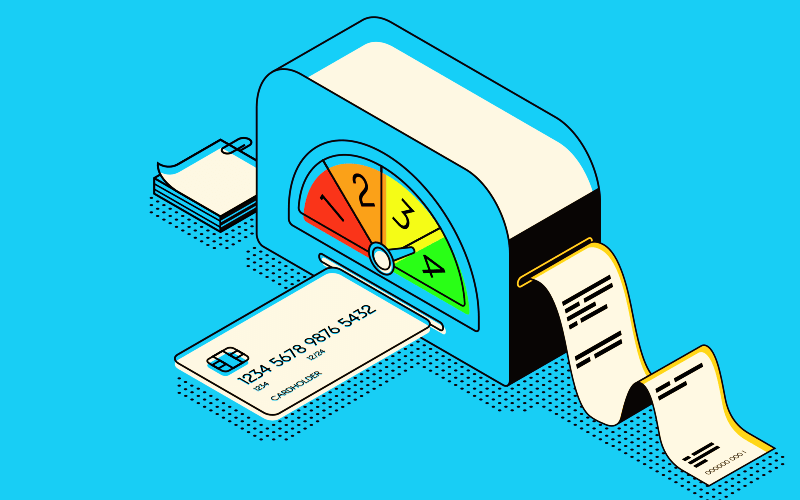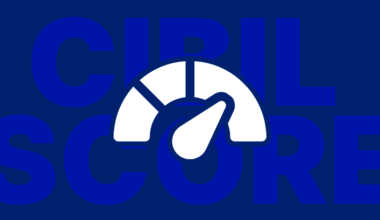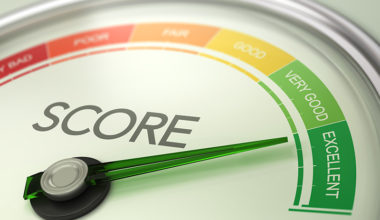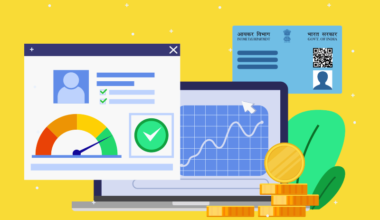All credit reports contain a separate ‘tradeline’ for each credit account which depicts the nature of the user’s account, credit payment history, the date on which the credit was sanctioned, etc. All the information presented in the tradelines is used to determine the user’s credit score.
What is Tradeline or Credit Tradeline?
A tradeline meaning is basically a record of the user’s credit activities. Credit reporting agencies use the term ‘tradeline’ to describe the credit accounts of the users on the credit report. Tradeline is only established when a user is approved for credit.
- A tradeline records all the credit activities of the user including the nature of the credit account, number of accounts, total credit amount, etc.
- Each credit account has a separate tradeline. For example- If Mr. X has 4 credit accounts, his credit report will show 4 separate tradelines consisting of the details of the credit provider, the total debt amount, payment history, etc.
- The tradeline carries all the details like the current payment status, date of opening the credit account, the details of the lender, total credit amount, address, etc.
- Tradelines are available on the credit report and are used to calculate the user’s credit score
What are the Components of a Tradeline?
Tradelines are created on the basis of users’ total number of credit accounts and their credit activities. Credit bureaus like Equifax, Experian, TransUnion use tradelines to determine the user’s credit score. A tradeline consists of the following details:
- Name and address of the credit borrower
- Partial account number of the borrower
- Occupation of the borrower
- Date on which the account was opened
- Type of account- Loan or Credit Card
- Date of the user’s most recent credit activity
- Loan or credit amount and current balance
- Credit payment history
- Minimum monthly payment, rate of interest, payment frequency, date of last payment, etc.
- Credit limit, sanctioned amount, current balance and amount overdue
- Account responsibility- whether the user owns the account
Note – Each Credit bureau like Equifax, Experian, TransUnion use the credit report differently; hence, there might be some variation in the credit report.
What are the Types of Tradelines?
Number of credit accounts carries ‘n’ number of tradelines. No tradeline is identical to another tradeline and hence, are divided into different variants:
| Type of Tradeline | Meaning |
| Revolving accounts | Available credit, payments, balance changes as and when the user makes payment or purchases Example- Credit cards or lines of credit |
| Installment loans | These are the accounts in which the borrower borrows a fixed amount and is required to repay it on fixed terms Example- Student loans, personal loans, mortgages, auto loans |
What are Tradelines used for?
Tradelines are part of a credit report and are used to create the credit score. Lenders use tradelines along with the user’s credit profile to calculate the user’s creditworthiness.
Why is it Important to Check a Tradeline?
As tradeline is used to create a credit score, any fault in it can negatively impact the credit score. Hence, it is important to check a tradeline to verify the details included in it and to fix any error or raise a dispute for the same (if any). Besides, borrowers can even ask to remove a tradeline if any of the credit accounts is no longer being operated by them.
Each credit line has a separate tradeline and each tradeline is reflected on the credit report. As a result, any negative remark or error in the credit report can majorly affect the credit score. A negative credit score can become a reason behind a number of missed credit-based opportunities like not being able to get the desired loan amount, negotiation power, higher credit utilization ratio, low-interest rate, etc. Hence, a routine check on the credit report is important to escape the loop.
How to Read a Credit Report Properly?
A credit report records the following information and is used by lenders and financial institutions to determine sanctioning of a loan or credit to the borrower-
- Date of opening the credit accounts
- Number of credit accounts
- Total credit amount
- Credit payment till date
- Borrower’s payment history
- Any bankruptcies or credit inquiries
- Borrower’s identifying information (name, address, Social Security number)
- Lender’s details
Reading a credit report is a time taking process as it details all the credit information. Hence, follow the given tips carefully to read a credit report.
Note – Each of the 4 most popular credit bureaus that include Equifax, CIBIL, Experian and CRIF Highmark use the credit report differently; thus, there are chances that you’ll detect some minor variations in your credit report.
a. Personal or Identifying Information
Personal information in a credit report consists of the borrower’s name, occupation, address, current and previous account information, email addresses, date of birth, type of credit taken, ownership details, etc.
What to Check?:
A borrower should check his/her personal details carefully. There shouldn’t be any credit account opened in somebody else’s name (be it spouse, children, parents, etc.). Check for spelling mistakes, typos, unfamiliar or unrecognizable addresses, phone numbers, etc. that don’t belong to the borrower. Report the credit bureaus in case of any discrepancies. Note that credit bureaus cannot make changes to the credit report without consulting the financial institutions.
b. Credit History
This part of the credit report is quite a detailed section. It contains all the credit-based information like payment history, current balances, details of borrowers and lenders, current and closed credit accounts, etc. Based on the credit report, the credit score is created. Hence, it is wise to spend a good time evaluating the credit history properly.
What to check?
Thoroughly check the credit account number, balance, account name, payment due date, payment history, and payment status. Make sure to cross-check the current credit limits or original loan amount. Also, check for the following errors, if any to resolve them at the earliest-
- Accounts that are closed and shown as open
- Open accounts that are reported as delinquent
- Credit accounts that have a good repayment history but are erroneously marked as delinquent
- Credit payments reported as late when you have paid all in time
- Discrepancies between the dates of opened and closed accounts
- Discovered an unidentified account
- Report showing incorrect balance
c. Public Records
Public records showcase the debt-related information in the credit report that includes account foreclosures, bankruptcies, and repossession. These records stay on the credit report for almost 7 years and can severely hurt the credit score as they demonstrate the borrower’s serious credit delinquency. However, this section of the credit report does not include information about divorce, arrest, lawsuits, etc.
What to check?
The borrower should verify all the public record related information like name, addresses, date of birth, etc. Note that a borrower needs to submit a credit report along with an explanation to the lender (if required) behind the negative remarks/items recorded in the credit report.
d. Credit Inquiries
A credit inquiry explains when and who has accessed the borrower’s credit report. Credit inquiries are of the following types-
- Soft inquiries – When a borrower checks his/her credit payment history, it is called a soft inquiry. Besides, when creditors or other lenders check the borrower’s profile to offer some credit based opportunities, it is also considered to be a soft inquiry.
- Hard inquiries – Hard inquiries are those when a creditor checks the borrower’s credit profile while applying for a loan or credit or to increase the credit card limit. Hard inquiries are serious in nature and making frequent hard inquiries can severely impact the borrower’s credit score. A hard inquiry basically represents the number of times a borrower has applied for a loan or credit.
What to check?
Get an overview of the number of hard inquiries made against your credit applications. In case of detecting an unknown credit inquiry, make sure to raise a complaint about it. Borrowers can also raise a request to the lender to remove a hard inquiry.
What is the Importance of a Credit Report?
Credit report is the visual representation of the borrower’s financial health. A credit report is important as it is taken into consideration by lenders and financial institutions while approving a borrower’s loan/credit application. It either enhances or lowers the chances of acquiring a number of credit-based opportunities.
A good credit score comes with numerous advantages like higher credit limits, lower interest rates, etc., whereas a bad/poor credit score is the reason behind rejected loan applications. Anything that is being done by the borrower reflects on the credit report. Furthermore, remarks, comments or errors in the credit report make the situation worse as it can negatively impact the credit score.
To escape such a situation, it is good to check the credit report at least once or twice a year. Keeping this as a habit can help a borrower resolve comments, remarks, errors or credit delinquency to keep the credit report up to date and accurate.
What Information is not Included in a Credit Report?
Credit report records the financial activities of the borrower and information that is required to calculate the credit score. However, a credit report does not include the following-
- Salary
- Number of assets
- Employment status
- Marital status and the spouse’s credit history
How to Dispute Credit Report Errors?
Borrowers can raise a dispute to different credit bureaus in case of detecting any unidentified activity on their credit report or to remove the hard inquiry entry. Below is how you can do it effectively for different credit bureaus:
Experian – Borrowers can raise the issue online or over the phone by calling on the toll free number which is mentioned in the credit report. One can also send an email to the official address.
Equifax – Drop a mail to the official email address of Equifax or send a letter to the Equifax Credit Information Services to get the query solved.
TransUnion – Raise a dispute with TransUnion by contacting them on their official number or email address. A mail to their official address can also be sent to get the issue resolved at the earliest.
How to Check Free Credit Score?
Paytm allows borrowers to check free credit scores and a detailed summary of their credit activities. It takes less than a minute to check the free credit score on Paytm. Following are the steps to check free credit score:
- Login to the Paytm application
- Navigate to ‘Loans & Credit Cards’ and click on ‘Free Credit Score’
- The next screen will reflect your credit score on the basis of your previous financial history










